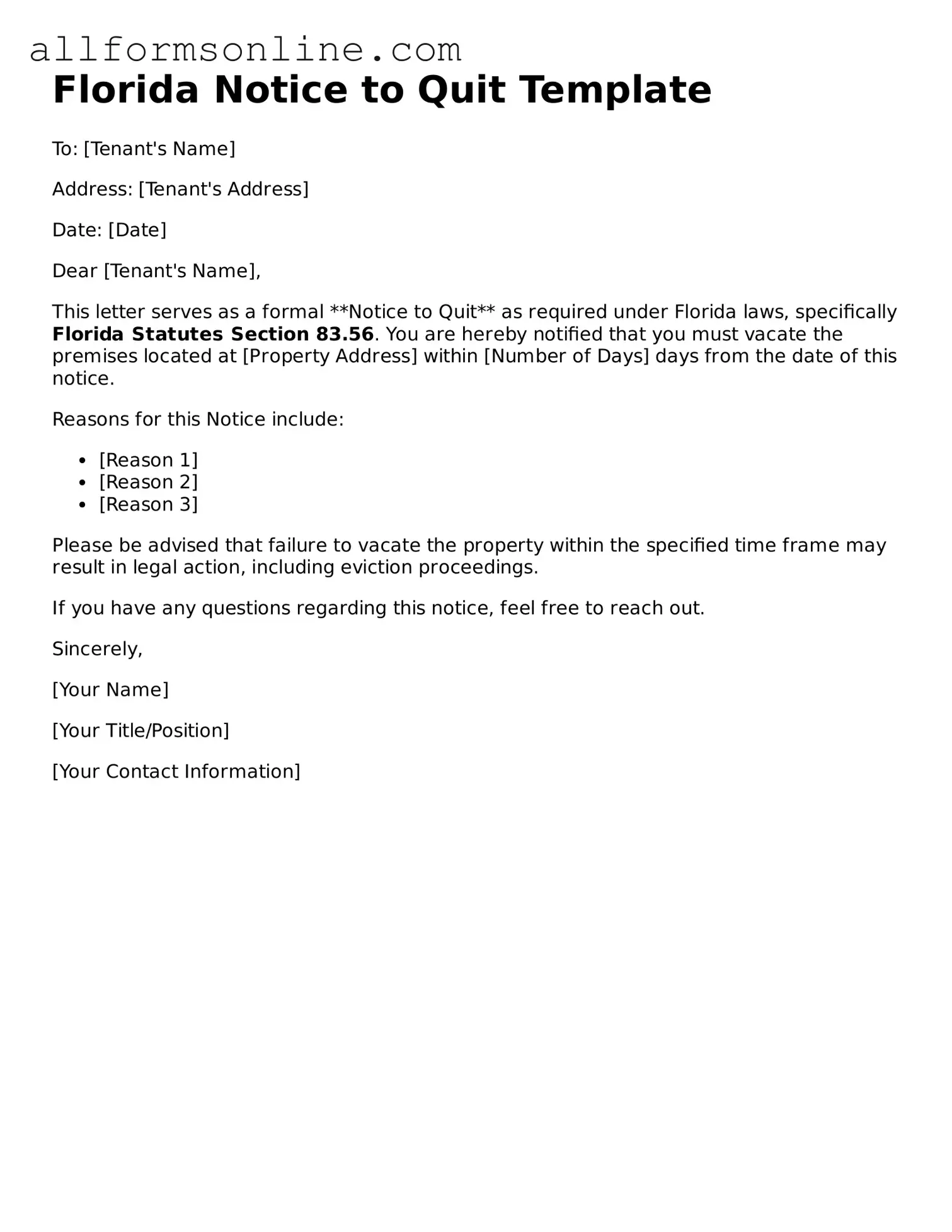What is a Florida Notice to Quit form?
The Florida Notice to Quit form is a legal document used by landlords to inform tenants that they must vacate the rental property. This notice is typically issued when a tenant has violated the lease agreement or has not paid rent. It serves as a formal request for the tenant to leave the premises within a specified time frame.
When should a landlord use a Notice to Quit?
A landlord should use a Notice to Quit when a tenant fails to comply with the terms of the lease, such as not paying rent or engaging in illegal activities on the property. This form is an essential step in the eviction process, allowing the landlord to formally notify the tenant of the need to vacate.
How much notice must be given in a Notice to Quit?
The amount of notice required can vary depending on the reason for the notice. Generally, landlords must provide at least three days' notice for non-payment of rent. For other lease violations, a seven-day notice may be required. It is important to check local laws for specific requirements.
Can a tenant contest a Notice to Quit?
Yes, tenants have the right to contest a Notice to Quit. If a tenant believes the notice is unjust or that they have rectified the issue, they can respond to the landlord. If the situation escalates to court, both parties will have the opportunity to present their case.
What happens if a tenant does not leave after receiving a Notice to Quit?
If a tenant does not vacate the property by the deadline stated in the Notice to Quit, the landlord may proceed with eviction proceedings. This typically involves filing an eviction lawsuit in the local court. The court will then schedule a hearing to determine the outcome.
Is the Notice to Quit form required to be notarized?
No, the Notice to Quit form does not need to be notarized. However, it must be properly completed and delivered to the tenant to be considered valid. It is advisable to keep a copy for records and proof of delivery.
Can a Notice to Quit be delivered electronically?
In Florida, a Notice to Quit can be delivered in person, by mail, or through a process server. However, electronic delivery is generally not accepted as a valid method unless specified in the lease agreement. Always verify local regulations regarding delivery methods.
What should be included in a Notice to Quit?
A Notice to Quit should include the tenant's name, the address of the rental property, the reason for the notice, and the date by which the tenant must vacate. Clear and concise language is essential to ensure that the tenant understands the situation and the required actions.
Where can I obtain a Florida Notice to Quit form?
A Florida Notice to Quit form can be obtained from various sources, including online legal document services, local courthouse websites, or by consulting with a lawyer. It is important to use a form that complies with Florida laws to ensure its validity.
